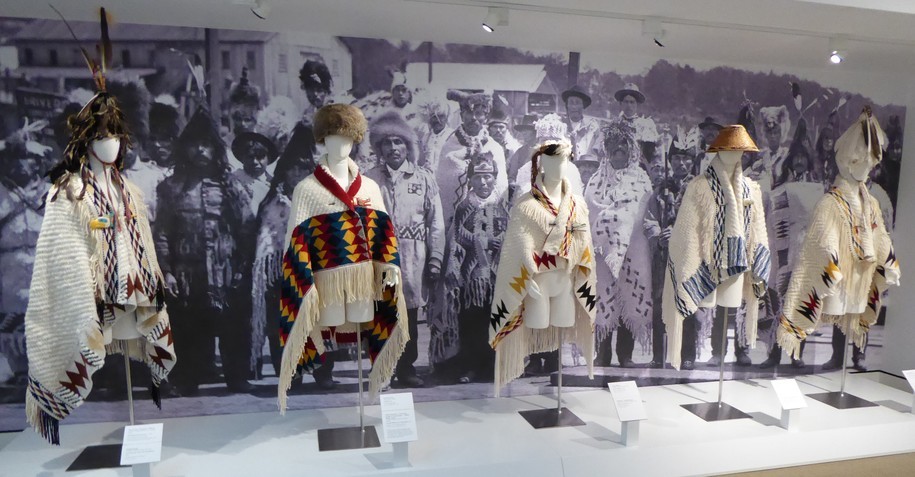
The Salish-speaking First Nations whose aboriginal homelands included the Pacific coast area of present-day Washington and British Columbia have a long tradition of weaving. Weaving styles were owned by families and were passed down from mother to daughter or from grandmother to granddaughter. In an essay in Listening to Our Ancestors: The Art of Native Life Along the North Pacific Coast, Marilyn Jones:
“If a boy is an only child and the women in his family wish to preserve their knowledge of weaving for the future, they will teach him. These men pass the knowledge on to the next generation, teaching their own daughters and sons.”
The Center for Contemporary Native Art gallery in the Portland Art Museum showcased the revitalization of Coast Salish fiber weaving. This special exhibit, called “Restoring the Breath—Sacred Relationship,” demonstrated 40 years of Coast Salish weaving through master and apprentice relationships. According to the museum:
“This exhibition is about restoring the breath of an ancient art form and honors the sacred relationship between humans and the natural world and between master and apprentice in the world of Coast Salish weaving. Four accomplished Salish weavers—Chepximiya Siyam (Janice M. George), Skwetsimeltxw (Willard “Buddy” Joseph), quhla-ay-hlup (Misty Kalama-Archer), and sa’hLa mitSa (Susan Pavel)—have come together to honor their master teacher subiyay (Gerald Bruce Miller), known to his students as ‘Uncle.’”
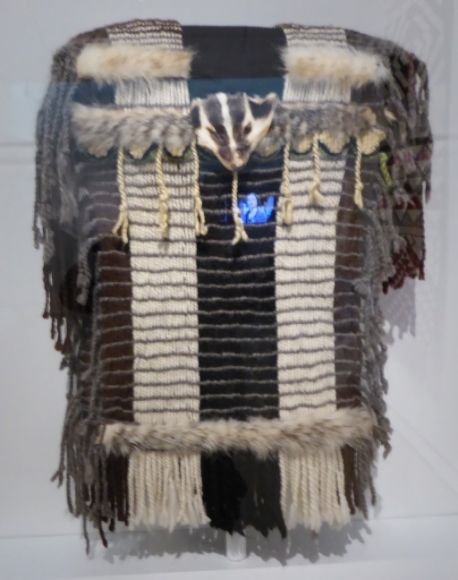 Shown above is Warrior’s Pride done in 2002 by suiyay (Gerald Bruce Miller, 1944-202).
Shown above is Warrior’s Pride done in 2002 by suiyay (Gerald Bruce Miller, 1944-202).  Shown above is Reflections made in 2016 by teeweewas (Tillie Jones).
Shown above is Reflections made in 2016 by teeweewas (Tillie Jones).  Shown above is Our Healing made in 2016 by sa’hLa mitSa (Susan Pavel).
Shown above is Our Healing made in 2016 by sa’hLa mitSa (Susan Pavel). 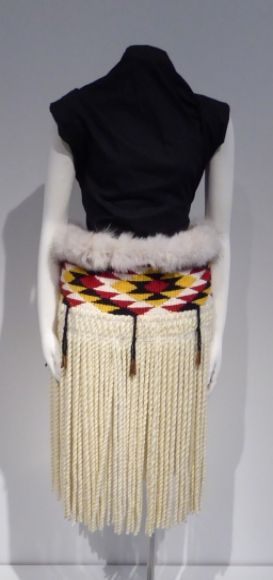 Shown above is Raven Enlightens the World made in 2012 by quhla-ay-hlup (Misty Kalama-Archer). This was made using wool blend hand spun yarn, commercial dyed wool yarn, artic fox fur, and copper cones.
Shown above is Raven Enlightens the World made in 2012 by quhla-ay-hlup (Misty Kalama-Archer). This was made using wool blend hand spun yarn, commercial dyed wool yarn, artic fox fur, and copper cones. 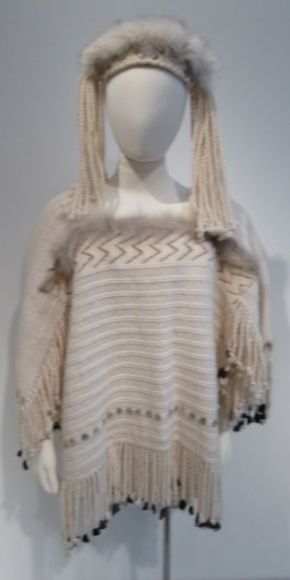 Shown above is Chief’s Lightning Regalia made in 2012 by by quhla-ay-hlup (Misty Kalama-Archer). This was made using wool blend hand spun yarn hand dyed with Native plant dyes, abalone shell buttons, deer hooves, and artic fox fur.
Shown above is Chief’s Lightning Regalia made in 2012 by by quhla-ay-hlup (Misty Kalama-Archer). This was made using wool blend hand spun yarn hand dyed with Native plant dyes, abalone shell buttons, deer hooves, and artic fox fur. 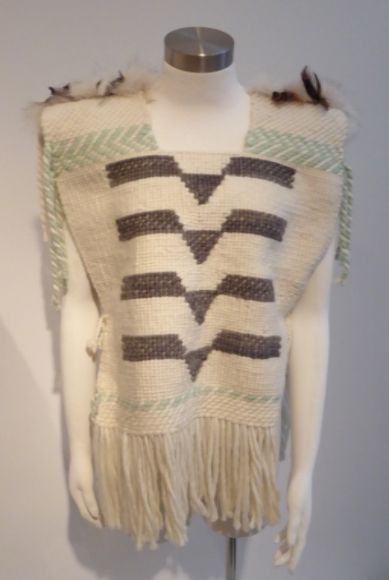 Shown above is Flying Geese High Class Vest made in 2016 by Sulcadeblu (Renee Kalama) and Sealth ertsa (Anne Mae Archer).
Shown above is Flying Geese High Class Vest made in 2016 by Sulcadeblu (Renee Kalama) and Sealth ertsa (Anne Mae Archer).
Recreating Royalty, Chief Robes
In 1906, a delegation of British Columbia chiefs traveled to England to advocate for land claims and First Nations political causes. Professor Annie Ross, in an article in American Indian Art, reports:
“For the occasion, ceremonial regalia such as wool robes, headbands, capes, hats and belts were woven. This was the las time that a weaving project of such magnitude was undertaken by Squamish weavers.”
According to the display at the Portland Art Museum:
“The chief robe design is recognizable throughout British Columbia and Northwest Washington State. The chiefs’ robes depicted on the 1906 delegation serve as our inspiration to recreate the designs that emulate and honor our ancestral weavers.”
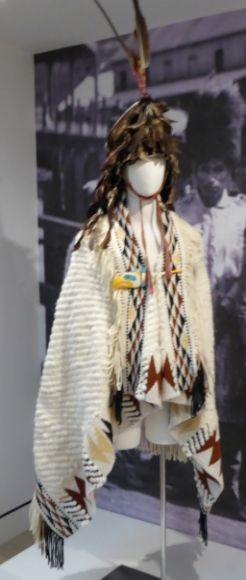 Shown above is Split Eagle Feather Bonnet made about 1960 by Chief Tommy “Coquitlam” Williams (Coquitlam Nation) and Nest of the Thunderbird made in 2016 by Angela George (Sts’ailes First Nation).
Shown above is Split Eagle Feather Bonnet made about 1960 by Chief Tommy “Coquitlam” Williams (Coquitlam Nation) and Nest of the Thunderbird made in 2016 by Angela George (Sts’ailes First Nation). 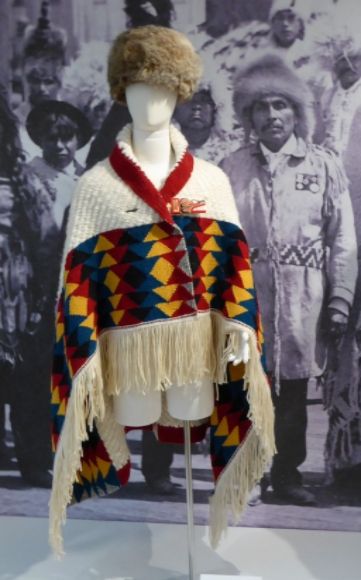 Shown above is a fur hat made in 2010 by an unknown artist and Noble Spirits made in 2016 by Chepximiya Siyam—Chief Janice George—and Skwetsimeltxw—Willard “Buddy” Joseph (Squamish First Nation).
Shown above is a fur hat made in 2010 by an unknown artist and Noble Spirits made in 2016 by Chepximiya Siyam—Chief Janice George—and Skwetsimeltxw—Willard “Buddy” Joseph (Squamish First Nation). 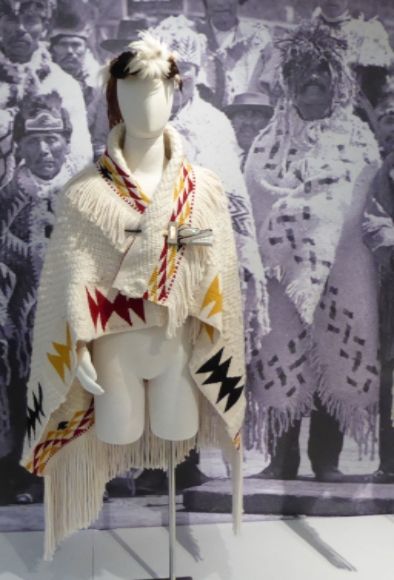 Shown above is Chief’s Headpiece made in 2000 by Tracey Williams (Squamish Nation) and Echoes of my Mother made in 2016 by Yatultanult—Michelle George (Tsleil-waututh First Nation).
Shown above is Chief’s Headpiece made in 2000 by Tracey Williams (Squamish Nation) and Echoes of my Mother made in 2016 by Yatultanult—Michelle George (Tsleil-waututh First Nation). 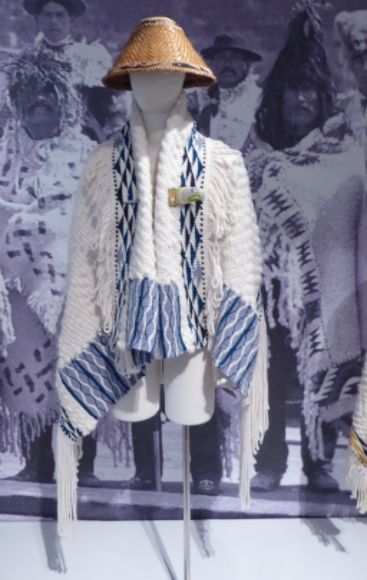 Shown above is a cedar hat made in 2012 by Lance Taylor (Tulalip Tribe) and In the Eyes of my Ancestors made in 2016 by Ch’elkwilwet—Raquel Marjorie Joe (Shishallh First Nation).
Shown above is a cedar hat made in 2012 by Lance Taylor (Tulalip Tribe) and In the Eyes of my Ancestors made in 2016 by Ch’elkwilwet—Raquel Marjorie Joe (Shishallh First Nation). 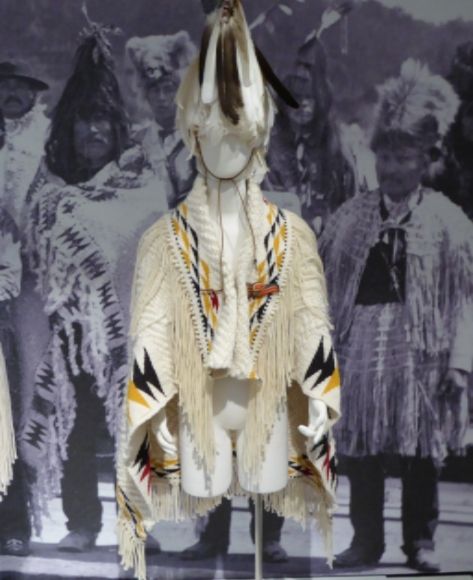 Shown above is a swan feather headdress made in 2010 by Chief Bill Williams (Squamish Nation) and Na swe’kw’elh tla’ Nekw’imeststn made in 2015 by Ketalwet—Kim Seward (Squamish First Nation).
Shown above is a swan feather headdress made in 2010 by Chief Bill Williams (Squamish Nation) and Na swe’kw’elh tla’ Nekw’imeststn made in 2015 by Ketalwet—Kim Seward (Squamish First Nation). 

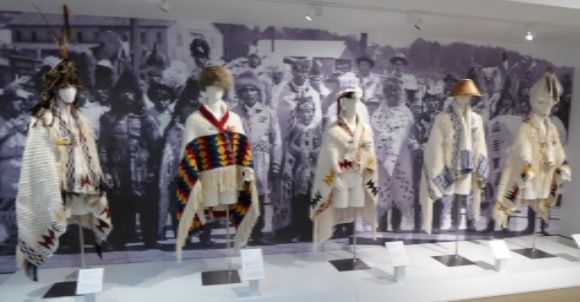
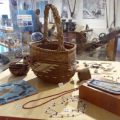
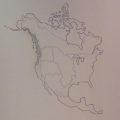
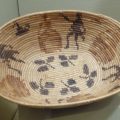
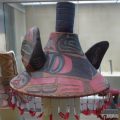
Leave a Reply